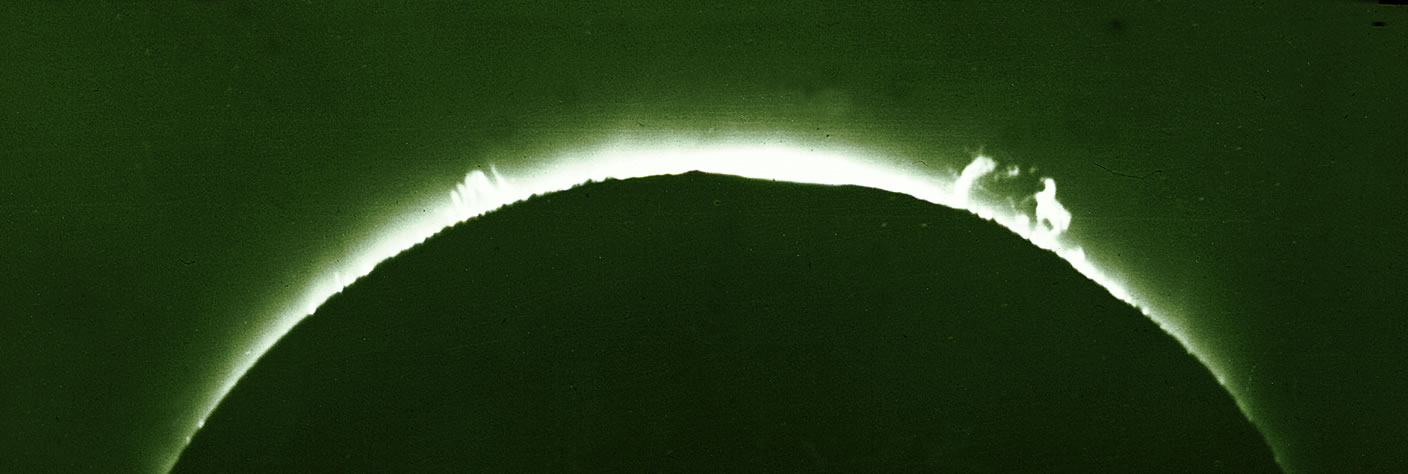Prominences
Discovery of prominences
During the total solar eclipse visible in Southern France and Northern Italy on 8 July 1842, several astronomers spotted reddish, cloud-like shapes protruding into the corona at individual points on the moon’s edge during the totality. Afterwards, it became apparent that similar observations had been made during earlier solar eclipses but subsequently overlooked.
These prominences were then made the main attraction on the programme for the total solar eclipse expected in East Prussia on 28 July 1851. Numerous observations of these formations were made, without coming to a consensus on their nature. While some considered the prominences as real, sublunary and probably linked to sunspots and faculae, others believed they could provide a sufficient optic explanation for them.
Both camps prepared a programme for the solar eclipse in Spain on 18 July 1860. Immediately after the observation, each camp believed they had won. Using photographs taken during the eclipse, however, external page Angelo Secchi, external page Warren De la Rue and others were able to prove with certainty that the prominences do not alter their position against the sun; the moon in fact glides over them. The decision was now unequivocal and observations during subsequent eclipses confirmed it.
In 1868 external page Joseph Lockyer and external page Jules Janssen managed to demonstrate that prominences can be rendered visible at any time with the aid of the spectroscope, i.e. even in the absence of the moon. Key conclusions could be drawn from a longer series of regular prominence observations.
Alfred Wolfer's prominence observations
In the early 1880s, in agreement with his superior, Rudolf Wolf, Alfred Wolfer expanded the Eidgenössische Sternwarte's active programme by taking daily photographs of sunspots and faculae on the sun in the projected image and regularly observing and measuring the prominences on the sun’s edge with a spectroscope. With his series of observations, Alfred Wolfer aimed to compile records for studies on the relationships between spots, faculae and prominences, as well as their distribution in the direction of the sun's rotation.
